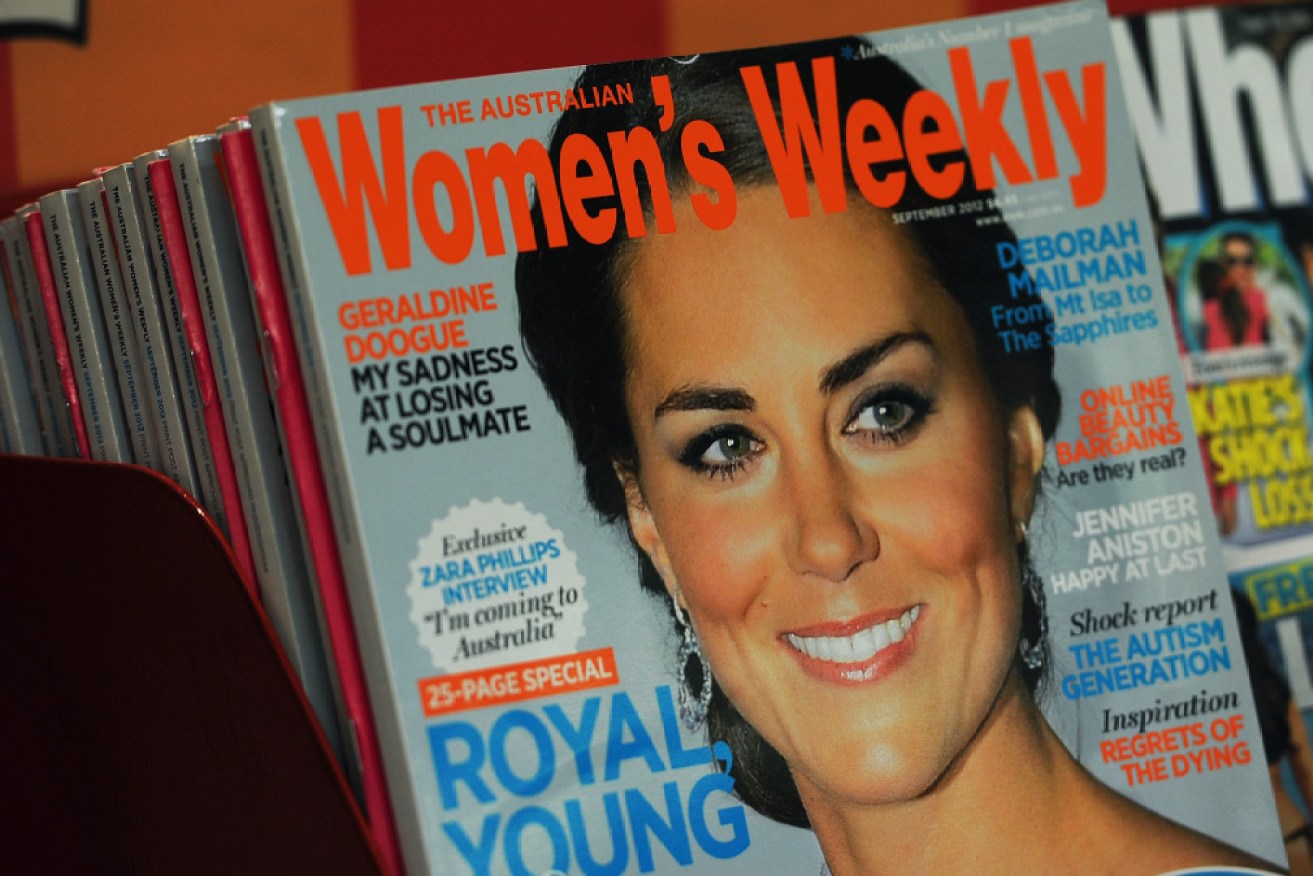Hello, goodbye: Bauer dumps big-name magazines in $550 million loss


Bauer Media has exited the Australian media scene. Photo: Getty
The precipitous fall from grace of iconic magazines like Australian Women’s Weekly, New Idea and Harper’s Bazaar is nearly complete.
On Wednesday, Bauer Media dumped its Australasian magazine portfolio on private equity group Mercury Capital for just $40 million.
Virtually a giveaway price.
In 2012, Bauer bought the famous business for $550 million.
Just last month it paid $40 million to Seven West Media for Pacific Magazines.
A total of $590 million for Australia’s two biggest magazine empires – sold for less than 10 per cent of the purchase price.
The final nail in the coffin for Bauer was the coronavirus pandemic, which saw magazine advertising values crash by a mind-numbing 52 per cent.
“The bottom has fallen out of the market and we don’t know how much it will come back,” said Nunn Media managing director Chris Walton said.
Although the pandemic was a bolt from the blue, the decline in magazine revenues is nothing new.
“It has been falling by 20 per cent or more for a few years,” Mr Walton said.
Overall, print products are in decline because of internet competition but magazine losses have been particularly pronounced.
“Magazine revenues have been in decline by over 15 per cent a year for a long time and that is a greater decline than newspapers have suffered,” independent media analyst Peter Cox said.
The readership of flagship magazine The Australian Women’s Weekly – once edited by big names like Ita Buttrose and Nene King – has nearly halved since Bauer arrived in Australia.
Meanwhile, other titles like New Idea, Wheels and Men’s Health have all incurred enormous readership losses since 2012.
But Mr Walton said the readership figures don’t tell the whole story.
“They stopped releasing circulation figures about two years ago and Australians appear to be getting more generous, sharing copies among more readers.”
As a result, it’s hard to get a firm take on how many copies of the magazines are actually going out.
General interest magazines like the Women’s Weekly also face another challenge.
“They are the department stores of the media that give you a little bit of a lot of things: Recipes, fashion, health and family advice,” Mr Walton said.
“Younger people are more likely to go to bespoke outlets that give more detailed and in-depth information.”
Bad management
There’s more to Bauer’s decline than the times.
“As I said on television at the time, they paid an outrageous price to buy into Australia,” said Mr Cox.
The purchase of Pacific Magazines was also problematic.
“They legally tried to get out of the deal, but Seven must have written a very tight contract that prevented that,” Mr Cox said. The matter finished up the NSW Supreme Court with Bauer being forced to proceed.
Management within Bauer seems to have been dysfunctional.
“There was a culture in the company of a lack of transparency, with staff always being the last in the industry to know about significant decisions,” an observer close to the business said.
When Bauer bought Pacific, it was understood that staff would be retained.
However, once the deal was completed 70 staff lost their jobs unexpectedly along with a further 70 stand-downs.
That followed the 237 job losses when Bauer decided to close its New Zealand magazine business in April.
Its policy making seemed confused, with promises to support an online transition for major fashion titles not backed up by staffing and other investments.
What had been one of its major titles, Cosmopolitan, abruptly closed with little warning in 2018.
What now?
The question stretching the minds of media observers is what Mercury plans to do to turn around the magazines.
“There is potential to improve sustainability across the business by merging some print and online titles in similar areas like holidays, hobbies and motoring,” Mr Walton said.
The performance of private equity in media has been mixed.
When CVC Asia Pacific bought the Packers out of their TV, magazine and new media interests like Carsales, NineMSN and Seek, they paid close to $5 billion.
Nine was refloated on the stockmarket in 2013 for $2 billion at a share price of $1.96, with the mags sold for $550 million.
Nine is currently worth $2.58 billion despite paying $4 billion for Fairfax in 2018 and starting Stan.
Its share price, at $1.51, is below the float price seven years ago.
CVC also sold the new media properties from the Nine deal, but there is little sign it was a huge success.
The Bauer deal is the final act in a long-running saga where Australia’s premier media families have exited the industry.
Today, just the Murdochs, with News Corp Australia, and the Stokes, with Seven, maintain their media assets.
The rest are in institutional or private equity hands.








